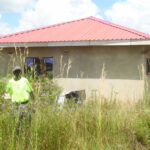A devastating diarrhoea outbreak has claimed seven lives and infected 7 153 people across Zimbabwe in just one week, according to the Ministry of Health and Child Care. The crisis, highlighted in the Weekly Disease Surveillance Report for the week ending December 1st, 2024, paints a grim picture of the country’s struggle with waterborne diseases.
The report reveals that the fatalities occurred across multiple provinces, with two deaths reported at Sally Mugabe Central Hospital and one each at Parirenyatwa Group of Hospitals and Ruwa local board in Harare Metropolitan Province; two further deaths occurred at UBH in Bulawayo Metropolitan Province and one in Kwekwe District, Midlands Province.
The impact on young children is particularly alarming. Children under five years old account for a significant 59% of the reported cases, representing three out of the five fatalities. The provinces hardest hit by the outbreak are Mashonaland East (1 099 cases) and Mashonaland West (1 414 cases). The cumulative figures for common diarrhoea cases since the start of the year are even more concerning: 335 191 cases and 171 deaths.
The Ministry’s report directly links the severity of the outbreak to the country’s deteriorating water and sanitation infrastructure. Residents in many urban areas face severe water shortages, receiving water only once a week, if at all lucky. The dilapidated sewer system, plagued by frequent blockages and bursts, further exacerbates the problem, creating a breeding ground for disease. This dire situation is compounded by the impending rainy season, which is expected to worsen the spread of waterborne illnesses.
He warns, “With the rainy season approaching, contaminated water sources and overflowing sewage pose a grave risk to public health,” urging the public to take preventative measures such as boiling water before consumption and practicing regular handwashing.
The crisis is further intensified by Zimbabwe’s economic hardships, as noted by Medical and Dental Private Practitioners Association of Zimbabwe president Johannes Marisa.
He points to the increase in informal vending as a significant contributor to the problem: “Many cases of diarrhoea circle around poor sanitation, contaminated water and food plus health ignorance. The rains have started, water body pollution is taking place and surely there is no health joy. The economic hardships are pushing many people into vending, without requisite amenities, a development which is detrimental to health especially if water and sanitation are scarce,” Marisa explained.
The lack of proper sanitation and food handling practices in these informal settings significantly increases the risk of disease transmission.
Itai Rusike, Community Working Group on Health executive director, echoes these concerns, emphasizing the link between unhygienic conditions, water scarcity, and sewage contamination in the spread of diarrhoeal diseases. He points out that limited access to piped water makes thorough cleaning of hands, utensils, and food almost impossible, significantly increasing the risk of infection.
He calls for urgent action from the authorities: “We urge the authorities to work harder towards compliance with the public health and other statutes that regulate water, sanitation and the environment,” Rusike stated.
He also urges the population to adopt preventative measures such as hand hygiene, water treatment, thorough cooking, and careful food preparation.
“Vegetables, fruits and other foods consumed cold must be cleaned with treated water before consumption. Communities should also be knowledgeable about the sources of vegetables they consume as sewerage is currently not well managed,” he added.
The scale of the outbreak underscores the urgent need for improved water and sanitation infrastructure and public health initiatives to prevent further suffering and loss of life. The combination of inadequate infrastructure, economic hardship, and the approaching rainy season presents a significant challenge, demanding immediate and comprehensive action from authorities and communities alike.












